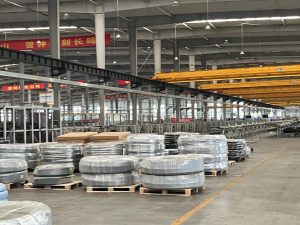Drill hoses are used on oil rigs to convey drilling mud, well effluents and cement slurry. They have a lining that protects the hose construction from chemical and heat effects of the conveyed medium.
During deep hot-water ice drilling, the residual non-flowing hot water in the drill hose will quickly become cooled and frozen in 1 h at the low temperature of -20 degC. The frost heave force generated by this freezing will easily cause the hose to rupture.
High-Pressure Hose
High pressure drill hoses can take on a lot more power than lower-pressure models. This enables them to withstand a lot more stress and temperatures as well, making them ideal for various situations.

These types of hoses are typically made from a variety of materials and can be used in a number of different ways. One common use is with a pressure washer, which can blast water or other materials at high-pressure levels to clean surfaces, such as driveways and decks.
High-Pressure Hydraulic Hose
High-pressure hydraulic hoses are durable and can withstand pressure, high temperatures, and bending. This makes them a popular choice for transferring chemical substances. However, they can be difficult to cut. Using the right saw and following some important steps can make it easier to cut these lines.
First, you must select the proper hose for your equipment. Look for the minimum operating and burst pressure ratings to ensure safety and functionality. Also, choose a fitting that is compatible with the hose’s material and pressure rating. This will help prevent unnecessary strain, mechanical fatigue, and leaks. You should also route the hoses parallel to machine contours. This will decrease hose length and eliminate hard angle bends that restrict flow and strain the hose. You should also use clamps to secure hoses in place. This will prevent the hoses from being pulled, hit, or crushed and can prevent them from rubbing against other components.
Low-Pressure Hydraulic Hose
Hydraulic hoses transport the power from a pump to the actuator, such as a cylinder or motor, that does the work. They must withstand heavy amounts of vibration and shock, as well as harsh environmental conditions. It’s important to select the proper hydraulic hose for each application and maintain it correctly.
For example, you should always follow the hose’s maximum working pressure rating, which is the amount of pressure the hose can support safely. The hose’s temperature rating and the media it transports also play an important role in its life.
A hybrid hose, such as the Parker Hybrid Push-Lok Hose 837-PU, offers exceptional torsion resistance and is resistant to extreme temperatures. It has a Push-Loc fitting that secures to the hose without the need for crimping equipment or a tightening tool. Its push-on connection allows for a fast, easy and secure fit that resists leaks. The hose also has a ply of woven textile fibers reinforced with a body of steel wire.
High-Pressure Cementing Hose
Our 10,000 psi cementing hose is designed as API 7K specification. It can transport cement slurries under high pressure to fix the drill casings on oil rigs. It has a small diameter and is light weight, making it easy to handle.
This hose is made from wearproof, high temperature, oil resistant synthetic rubber and steel wire of high strength. It is ideal for handling a complete range of standard and sour gas fluids, including drilling, completion and workover fluids containing suspended solids.
Its hose loops can be connected to pumps or other pipes with Fig 1502, Fig 1002 and Fig 602 hammer unions, and it is compatible with the Fig 503 coupling. It can also be fitted with safety clamps and hose lifters for convenient operation. Letone can also supply different end terminations based on your specifications, such as threaded and welded ends. The hose can be rated for working pressures up to 15,000 psi.